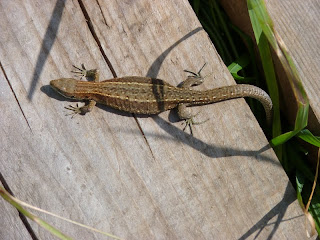I was working just out of county at Wootton in Beds today, when I suddenly became aware of a noise.
It was a while before I twigged that it was a Raven, but I soon spotted it calling from a Pine Tree in the nearby churchyard. The noise became more constant and I realised there were actually two birds.
I carried on working and could hear the local Crows, Rooks and Jackdaws going beserk. Looking up I saw that there were now 4 birds flying around - amazing to think these birds were pretty rare around here a few years ago, in fact they're still quite scarce now.
They once again landed in the Churchyard Pines where they remained all morning, occaisionally having a soar around and at one time joined a passing Buzzard.
It was a while before I twigged that it was a Raven, but I soon spotted it calling from a Pine Tree in the nearby churchyard. The noise became more constant and I realised there were actually two birds.
I carried on working and could hear the local Crows, Rooks and Jackdaws going beserk. Looking up I saw that there were now 4 birds flying around - amazing to think these birds were pretty rare around here a few years ago, in fact they're still quite scarce now.
They once again landed in the Churchyard Pines where they remained all morning, occaisionally having a soar around and at one time joined a passing Buzzard.

















